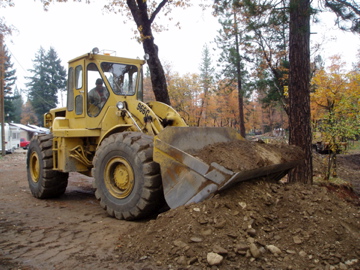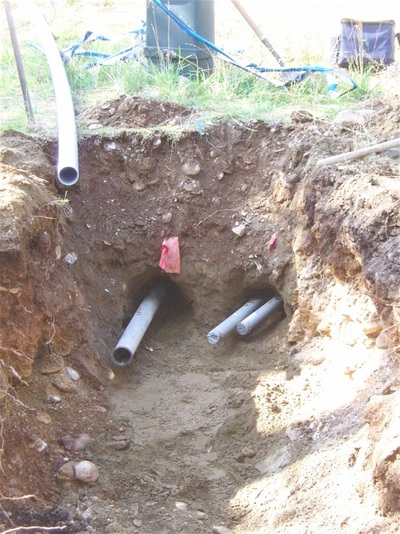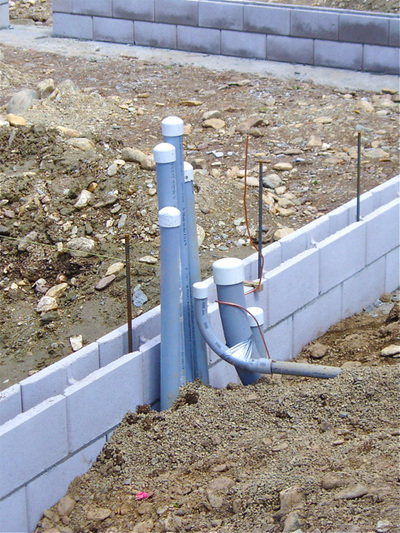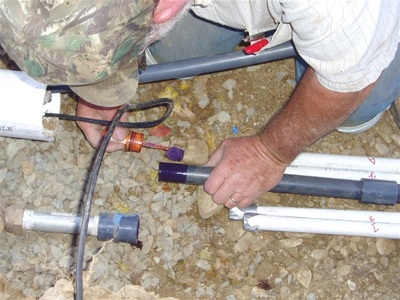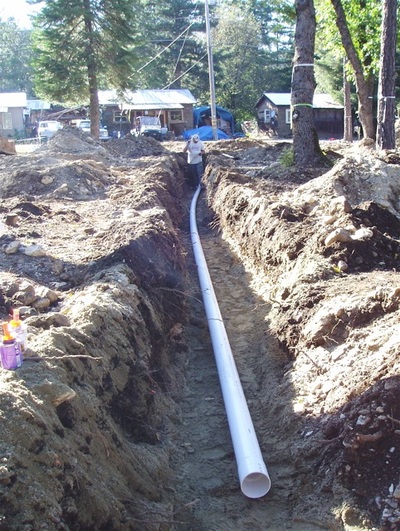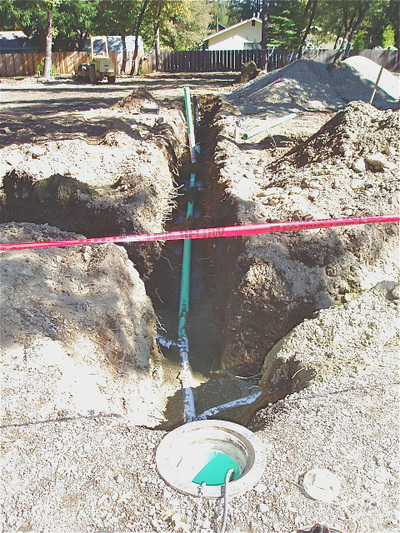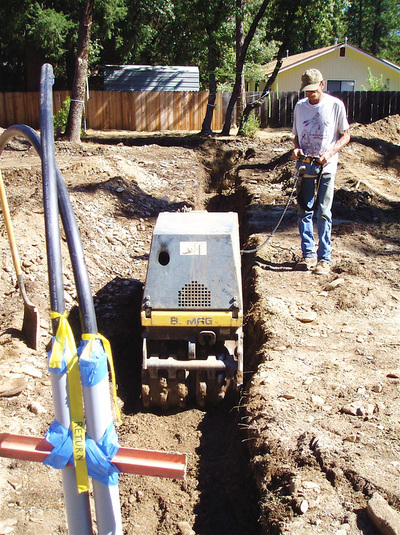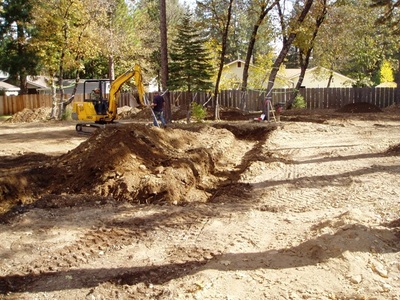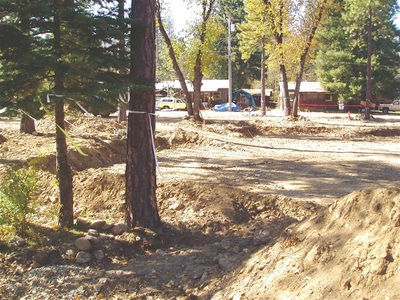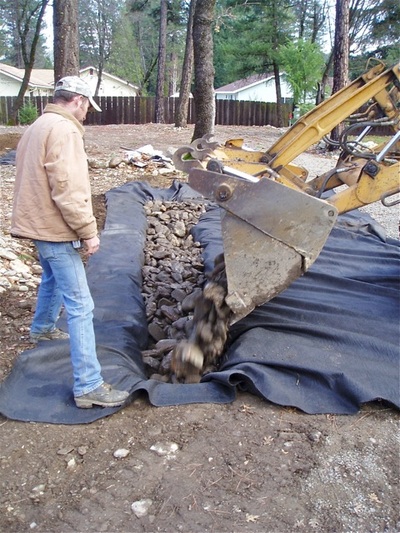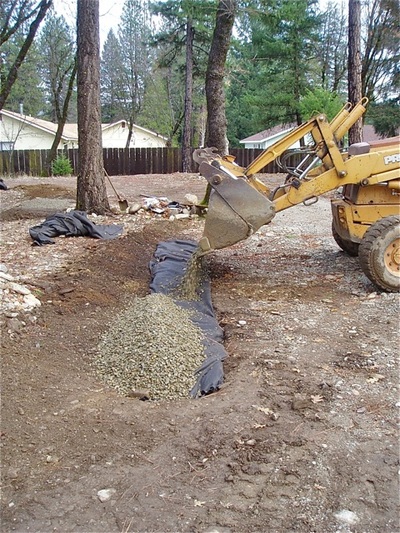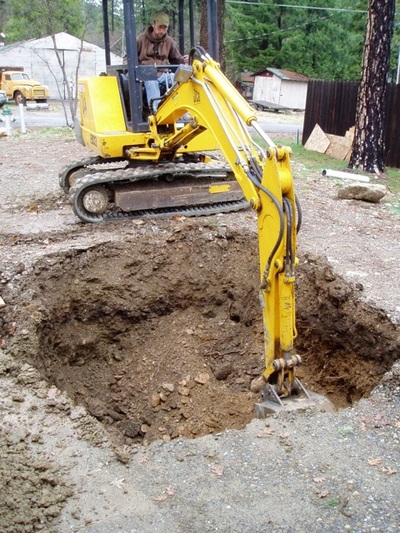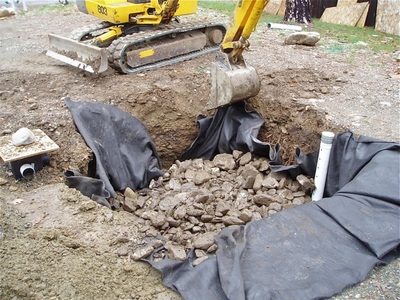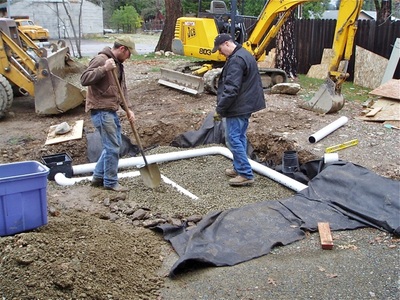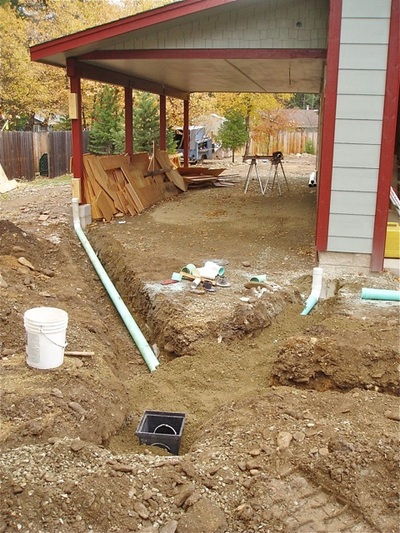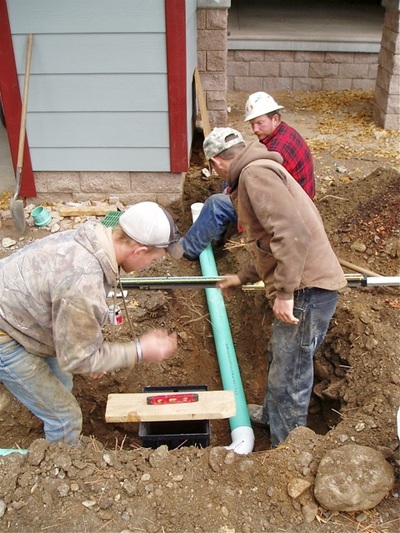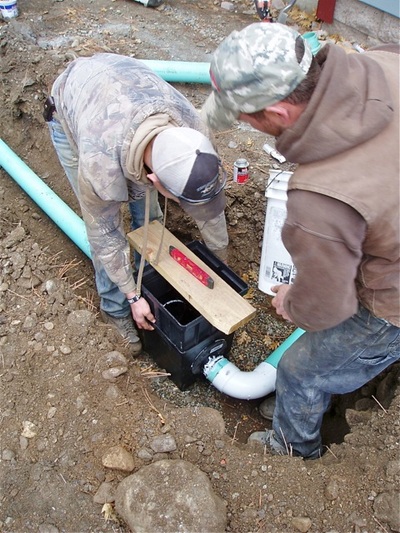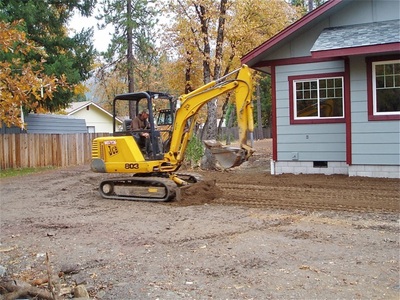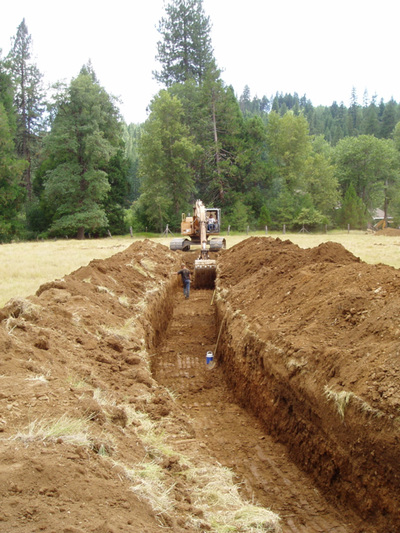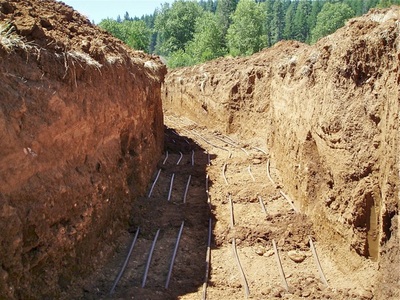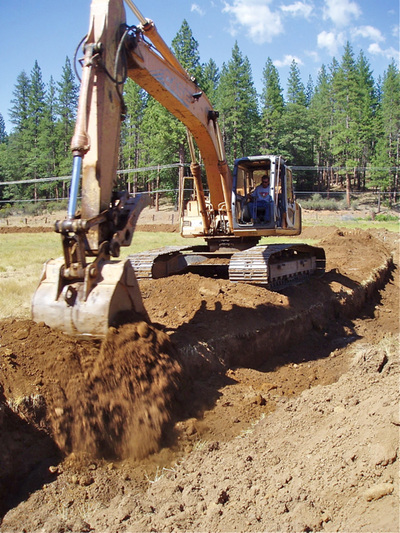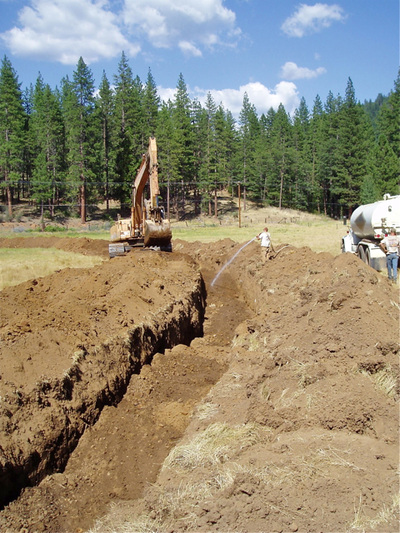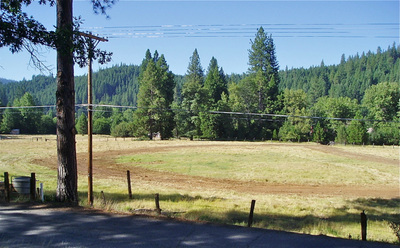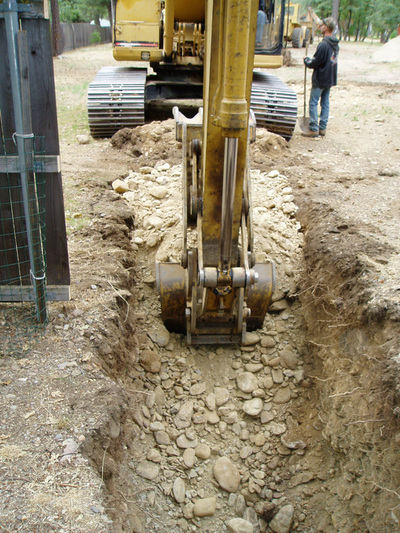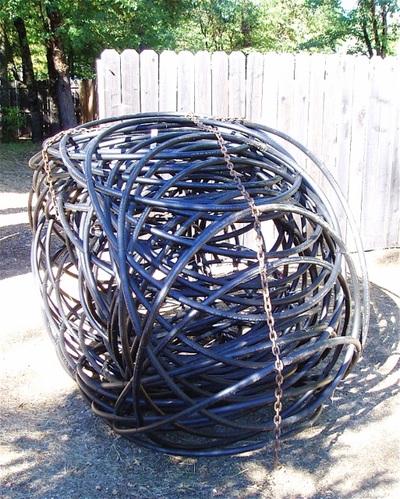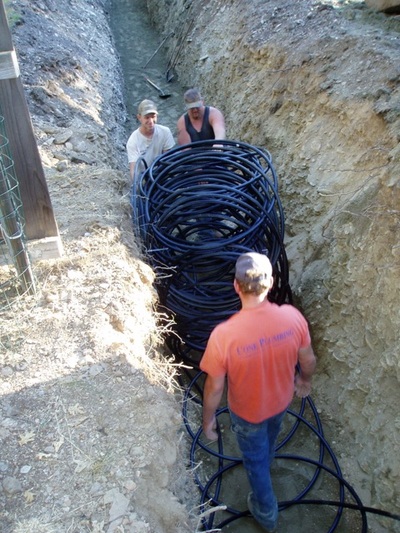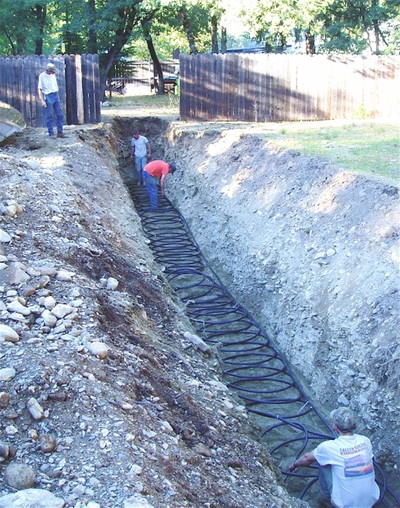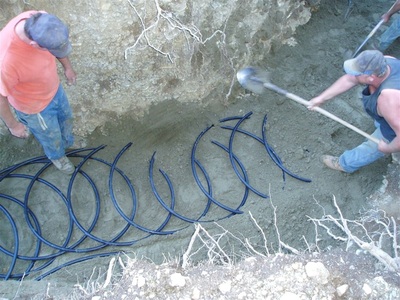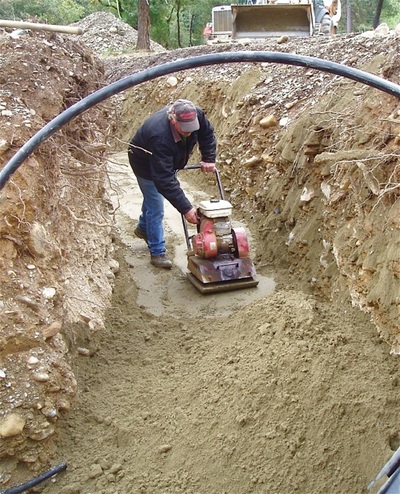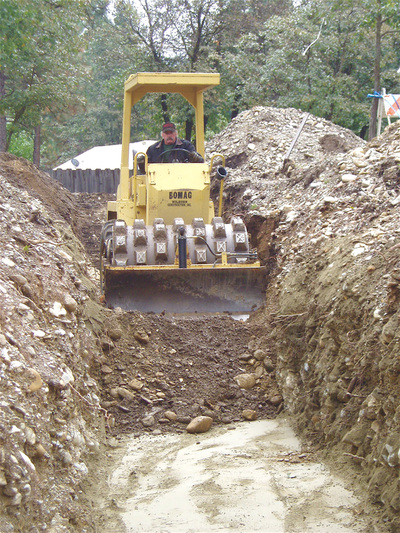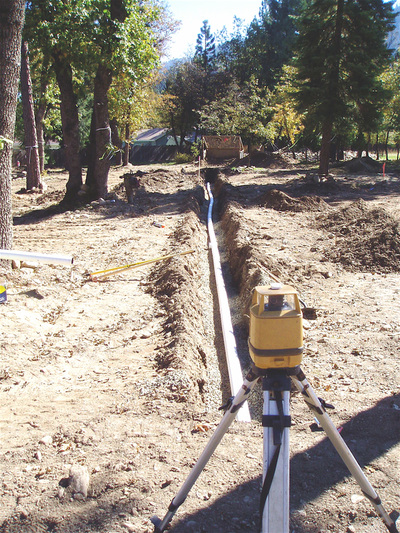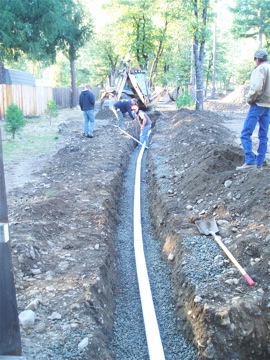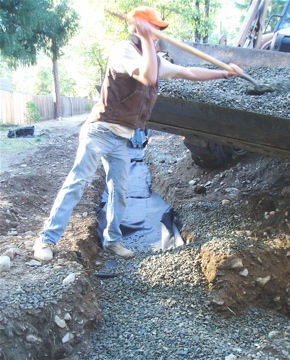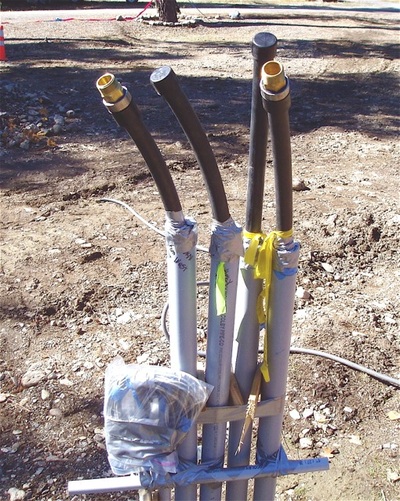Homesite development
Building a home starts with quite a bit of site preparation to place the infrastructure for utilities where it won't conflict with future structural foundations, walkways, patios, etc. Underground water, sewer, electrical, and communications pipes and conduits need advance planning and careful location to avoid later problems. We've successfully installed dozens of miles of lines, pipes, and conduit.
When the early work is done right, final grading and engineered drainage (such as at left) can be proceed with no surprises. The process is far more involved than simply leveling drain boxes and pitching pipes, but we have the tools and the experienced team that can get the work done right, the first time, for your home or structure project.
We have also installed geothermal heat pump ground loops.
The photo galleries below will provide captions with enlarged images. Simply click on them and then use < or > arrows to advance or retreat within each set.
Site Prep -to- Finish Grading
There are a variety of digging, trenching, filling, and excavation projects involved with home construction or retrofits. Building contractors often depend on us, like you can for your smaller project. We do grading, utility infrastructure, drainage, driveway prep and paving. We can even bore post holes for fencing or planting larger-sized trees.
Horizontal Ground Loops for Geothermal Heat Pumps
More recently, we've taken on the installation of geothermal heat pump horizontal loops, and we can heat-fuse their high density polyethylene (HDPE) conducting pipes. These are the piped loops which carry heat from the ground to be concentrated inside a building by a water source heat pump. Unwanted summer heat is evacuated from the building by the heat pump and put back in the ground via the same loop infrastructure. Nobody can out-work our equipment and crew with this type of installation.
Below are two such types of ground loops in the Quincy area. The first is a seven ton straight pipe run at six foot depth. The second is a four ton loop at seven feet in rocky-sandy alluvial "soil" that's not as conductive—but we installed special drains and pipes to keep the loops wetter, for better performance.
Below are two such types of ground loops in the Quincy area. The first is a seven ton straight pipe run at six foot depth. The second is a four ton loop at seven feet in rocky-sandy alluvial "soil" that's not as conductive—but we installed special drains and pipes to keep the loops wetter, for better performance.
